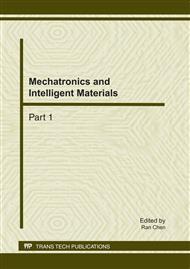p.827
p.832
p.837
p.842
p.846
p.850
p.856
p.861
p.866
Detection of Weak Signals Based on RBF Neural Network Filtering
Abstract:
The algorithm is presented in this paper based on the character about RBF adaptive neural network filtering needn’t previous information of input single and noise and has better ability of nonlinear mapping and self-study. The adaptive noise cancellation system is designed. The system can improve LMS algorithm slow convergence speed and extraction of narrow band signal faults and has small amount of calculation and real-time good characteristic. The effect is better at Using this system in the field of life characteristic signal detection identification. Results show that the system has the high feasibility and validity.
Info:
Periodical:
Pages:
846-849
Citation:
Online since:
February 2011
Authors:
Keywords:
Price:
Сopyright:
© 2011 Trans Tech Publications Ltd. All Rights Reserved
Share:
Citation:


